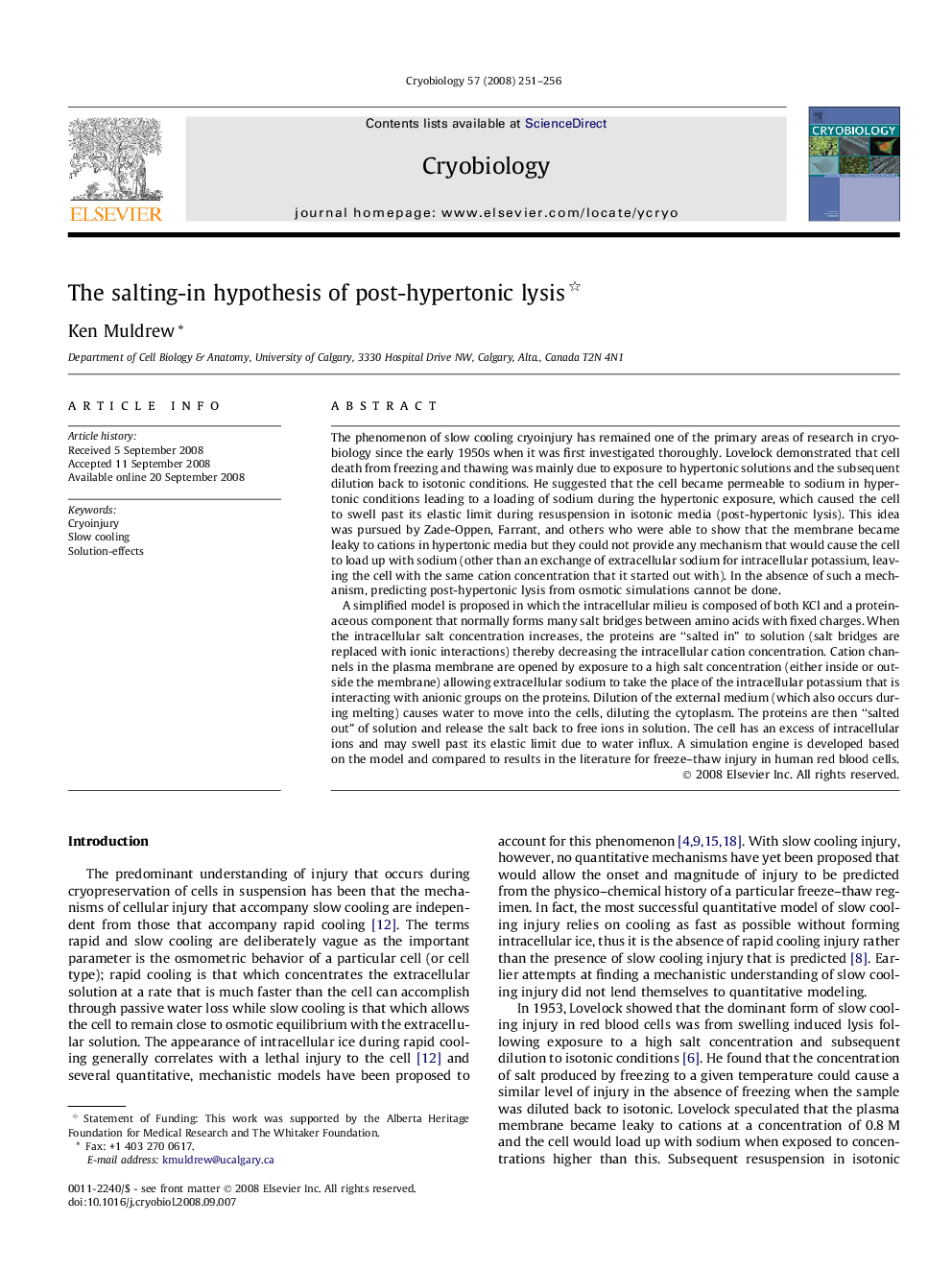| کد مقاله | کد نشریه | سال انتشار | مقاله انگلیسی | نسخه تمام متن |
|---|---|---|---|---|
| 2168898 | 1092921 | 2008 | 6 صفحه PDF | دانلود رایگان |

The phenomenon of slow cooling cryoinjury has remained one of the primary areas of research in cryobiology since the early 1950s when it was first investigated thoroughly. Lovelock demonstrated that cell death from freezing and thawing was mainly due to exposure to hypertonic solutions and the subsequent dilution back to isotonic conditions. He suggested that the cell became permeable to sodium in hypertonic conditions leading to a loading of sodium during the hypertonic exposure, which caused the cell to swell past its elastic limit during resuspension in isotonic media (post-hypertonic lysis). This idea was pursued by Zade-Oppen, Farrant, and others who were able to show that the membrane became leaky to cations in hypertonic media but they could not provide any mechanism that would cause the cell to load up with sodium (other than an exchange of extracellular sodium for intracellular potassium, leaving the cell with the same cation concentration that it started out with). In the absence of such a mechanism, predicting post-hypertonic lysis from osmotic simulations cannot be done.A simplified model is proposed in which the intracellular milieu is composed of both KCl and a proteinaceous component that normally forms many salt bridges between amino acids with fixed charges. When the intracellular salt concentration increases, the proteins are “salted in” to solution (salt bridges are replaced with ionic interactions) thereby decreasing the intracellular cation concentration. Cation channels in the plasma membrane are opened by exposure to a high salt concentration (either inside or outside the membrane) allowing extracellular sodium to take the place of the intracellular potassium that is interacting with anionic groups on the proteins. Dilution of the external medium (which also occurs during melting) causes water to move into the cells, diluting the cytoplasm. The proteins are then “salted out” of solution and release the salt back to free ions in solution. The cell has an excess of intracellular ions and may swell past its elastic limit due to water influx. A simulation engine is developed based on the model and compared to results in the literature for freeze–thaw injury in human red blood cells.
Journal: Cryobiology - Volume 57, Issue 3, December 2008, Pages 251–256